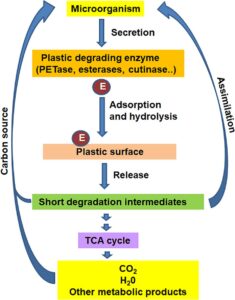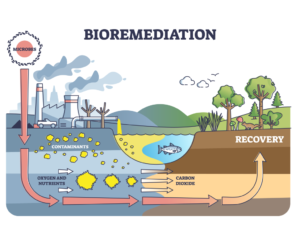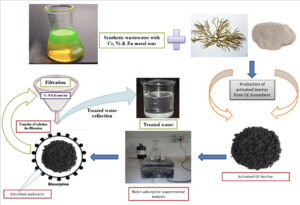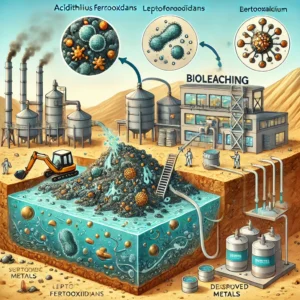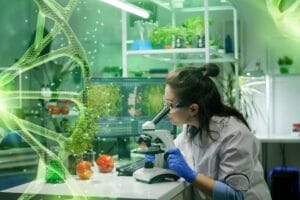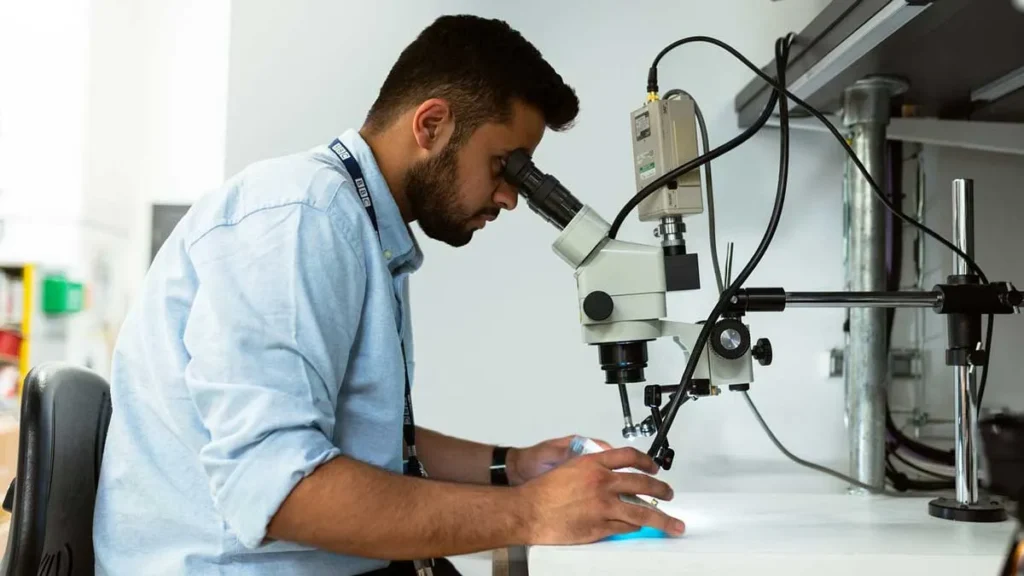GMOs in Bioremediation
Bioremediation is the use of living organisms, like bacteria, fungi, or plants, to remove or neutralize pollutants from a contaminated site. Genetically modified organisms (GMOs) have enhanced the efficiency and specificity of bioremediation processes.
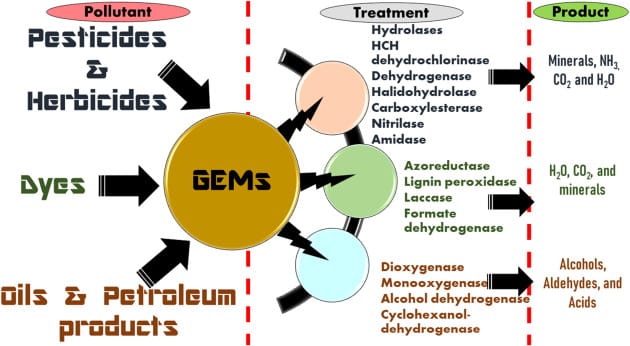
Key Applications of GMOs in Bioremediation
Oil Spill Cleanup
- GM bacteria like Pseudomonas putida have been engineered to degrade hydrocarbons in crude oil, making them useful for cleaning up oil spills.
- Example: The “superbug” developed by Dr. Ananda Chakrabarty, capable of breaking down multiple components of crude oil.
Heavy Metal Detoxification
- GMOs can be engineered to accumulate, sequester, or detoxify heavy metals like mercury, arsenic, and cadmium.
- Example: Modified E. coli with genes for metal resistance and bioaccumulation.
Plastic Degradation
- GM microorganisms are designed to break down plastics like polyethylene terephthalate (PET), which are otherwise non-biodegradable.
- Example: Genetically modified Ideonella sakaiensis bacteria that degrade PET plastics.
Radioactive Waste Cleanup
- GMOs can target radioactive isotopes in nuclear waste or contaminated areas, helping to stabilize or remove these hazardous materials.
- Example: Modified microbes that resist radiation and bind radioactive substances.
Pesticide and Herbicide Degradation
- GMOs can degrade harmful agricultural chemicals like atrazine, reducing their environmental impact.
- Example: Genetically engineered strains of Pseudomonas bacteria that break down herbicides.
Improved Soil and Water Quality
- GM plants and microbes can absorb and neutralize toxins in soil or water, such as nitrates and phosphates from agricultural runoff.
Advantages of Using GMOs in Bioremediation
- Specificity: GMOs can be tailored to target specific pollutants.
- Efficiency: Faster and more effective degradation or removal of contaminants.
- Cost-Effectiveness: Reduces the need for expensive chemical or physical cleanup methods.
- Eco-Friendly: Less intrusive to ecosystems compared to traditional remediation methods.
Challenges and Concerns
Environmental Risks:
- Unintended release of GMOs into the environment may disrupt local ecosystems or outcompete native species.
Gene Flow:
- Horizontal gene transfer might spread modified genes to natural populations.
Regulation:
- Strict regulatory frameworks in some countries make deploying GMOs for bioremediation complex.
Limited Public Acceptance:
- Concerns over safety and ethical implications can hinder adoption.
Notable Case Studies
Arsenic Bioremediation:
GM bacteria engineered with arsenic resistance genes have been used to detoxify groundwater contaminated with arsenic in regions like South Asia.
Mercury Bioremediation:
Modified E. coli with the mer operon can reduce toxic mercury ions (Hg²⁺) to elemental mercury (Hg⁰), which is less harmful.
Future Prospects
- Advanced genetic engineering tools like CRISPR-Cas9 enable precise modifications, enhancing the efficiency of GMOs in bioremediation.
- Integrating systems biology and bioinformatics to design GMOs with optimized metabolic pathways for pollutant degradation.
- Synthetic biology to create entirely new organisms tailored for specific environmental challenges.

